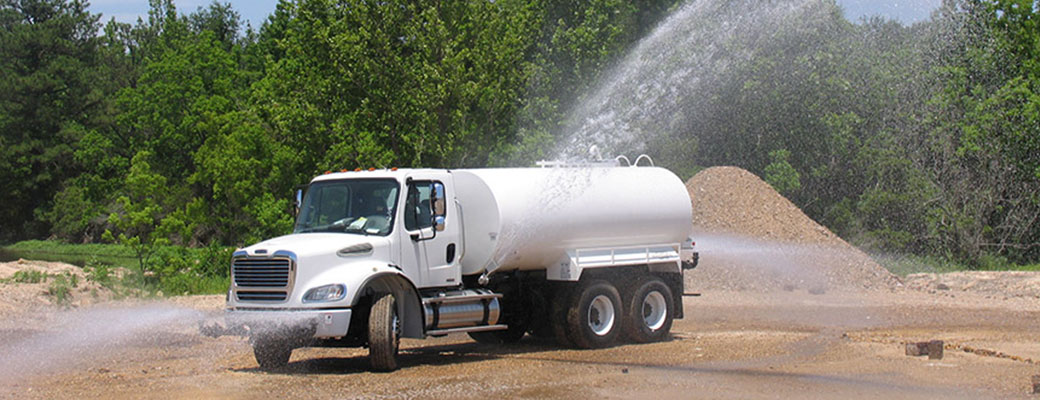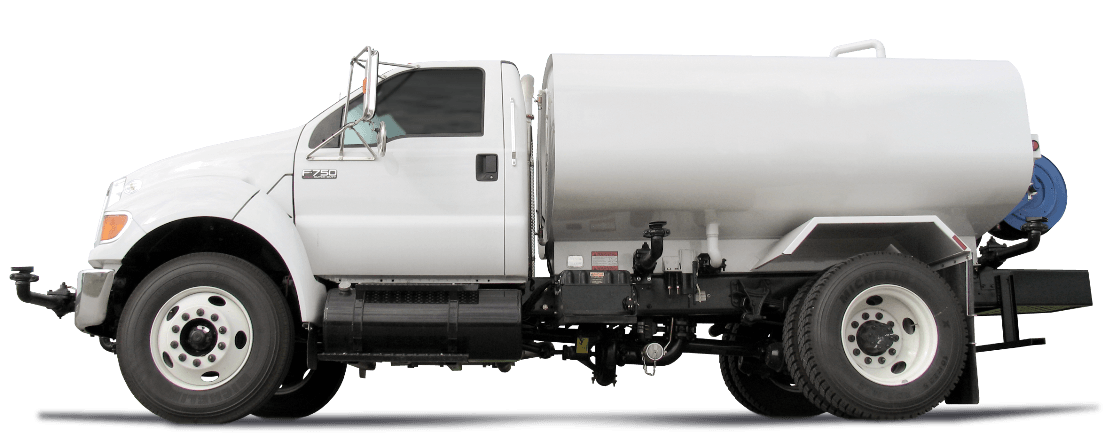How equipment operators haul and apply water can significantly impact overall safety and productivity. Though water trucks seem pretty basic in application and design, several factors have a significant impact on efficiency, from the challenges of water movement in the tank to the steel used in the tank’s construction. All of these factors impact safety, efficiency, maintenance and operation.
Water truck drivers also impact the overall safety on haul roads by having complete control over their truck and the tank’s water output. For instance, individually controlled spray heads help water truck drivers optimize their water usage, as well as minimize the chance of over-saturating haul roads, which can create slick driving conditions.
Inside the cab, operators can turn on the individual spray heads, and, in some systems, program a spraying interval. This optimizes water usage, so operators cover more surface area with minimal risk of making haul roads too slick for other mining equipment. In addition, the added control and metering means they spend less time backtracking to a wellhead.

Ledwell Water Truck – spraying water
Water truck drivers also need to concentrate on their surroundings to ensure their safety and the safety of others. Taking attention off the task at hand can significantly increase the risk of an accident, especially when operating heavy-duty, off-highway equipment. Components, such as simple water metering controls, contribute to overall safety because they allow the water truck driver to focus on his or her surroundings while driving the truck.
Efficiency and safety are also affected by maintenance. A tank with a flat top reduces the likelihood of slipping and falling when filling or servicing the truck. And trucks that feature lanyard tie-offs further enhance safety by providing an anchor point for operators if they were to fall.
Enjoying our insights?
Subscribe to our newsletter to keep up with the latest industry trends and developments.
Stay InformedMechanics also need access to the tank’s interior to complete routine maintenance, such as clearing out sediment and debris that builds up over time. This can be a significant challenge with some tank designs. With many tanks, the only access point is through the fill hole on the top. The alternative is to cut a hole in the side of the tank using an acetylene torch, which creates sharp edges for those entering the tank and requires a repair job after the maintenance is complete.
Alternatively, enhanced water tank designs eliminate this hassle and safety hazard by incorporating external access doors on the front and/or back of the tank. When opened, the doors allow personnel to easily enter the tank and, with the aid of the baffle doors, have natural airflow and lighting for truck maintenance.
Designing tanks for minimal and easy maintenance is one way manufacturers help minimize the risk of injury to those servicing a water tank and its electric and hydraulic systems.
Mechanical pipe joining systems allow mechanics to replace damaged piping easily. They basically remove the coupling’s collar, replace the pipe and tighten the collar to form a complete seal, instead of having to weld on a rusty pipe, which can often take hours and equate to substantial downtime for the water truck.

Knapheide KWT2 Water Truck (Ford F750 Side)
Other new innovations feature hydraulic-powered water pumps that drivers can activate while the engine runs at any RPM, whereas most require low RPMs. This virtually eliminates the risk of overpowering a water pump, which is costly to replace.
Rounded water tanks are the most common. They get the job done for the most part, but not without their own challenges. Their curved form raises the water’s center of gravity, making the truck less stable when traveling the roads of mines or quarries. As a result, operators often do not fill the tanks completely to achieve better stability. This means the operator needs to refill his water tanks more frequently, contributing to added downtime and increased fuel consumption because it requires backtracking to the water source.
In addition, the rounded design of the tanks contribute to water churning as there are no corners, edges or stops to slow down the water’s momentum and dissipate its energy.
To combat those challenges, a water tank that features square corners minimizes churning and has a larger capacity. The unique design allows the manufacturers to take advantage of space near the ground, lowering the unit’s overall center of gravity and enhancing stability.
Baffles
The inside baffling system is another key element that affects the safety and efficiency of the water tank. Baffles are the walls inside the tank that help minimize water from surging from side to side and front to back — similar to what’s inside large ocean carriers. Almost all water tanks on the market feature baffles, but some contain large holes cut into them to provide maintenance personnel with access to the individual compartments.
This type of baffle provides limited surge protection and can affect the truck’s overall safety and stability. These openings allow water to surge between compartments, from side to side or front and back, especially when the water truck makes a turn or stops suddenly. This surging increases the risk of a truck tipping on its side or potentially being involved in another type of accident.

Amthor International – Water Tank Truck
To minimize surging, some tanks feature sophisticated water control systems that use baffling that stands from floor to ceiling, as well as runs the complete length and width of the tank, resulting in full compartmentalization of the water.
To offer the best level of water compartmentalization, these baffles require holes to allow water to flow freely throughout the tank, but they need to be small enough to prevent water from surging during use. To address this, some water tanks feature access doors that are about as tall as an average-sized worker to provide a more advanced solution than simply a hole near the ground in the baffle walls.
These baffle doors, which technicians walk through easily, practically eliminate the need to crouch down while they maintain the tank and remain shut while the water tank is in operation. With access between multiple compartments, technicians have minimal concerns about working in confined spaces.




















